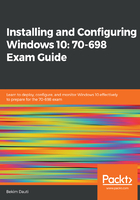
Windows 10 software licensing and activation
In the 20-year history (from Windows 95 to Windows 10) of Microsoft Windows, there was no version of it that was offered free of charge, except for Windows 10. And that is because, in its first year of the launch (from August, 2015, to July, 2016), Microsoft offered a free upgrade to Windows 10 for all users who owned a PC running a genuine copy of Windows 7, and 8/8.1. The nice aspect of this unusual offer from Microsoft was that following such an upgrade, Windows 10 was activated and, just like that, the user already had a new licensed OS on his computer. That itself highlights the question of what a software license is? A software license is a legal agreement between an end user and the owner of the software that governs the use and redistribution of its software. Another aspect associated with the software license is software activation, which represents a process that ensures that the end user is using a genuine software copy. Back to Windows 10, the product key you own represents a software license, whereas the software activation verifies the product key that you have used to install the OS. Once activated, your product key has been legitimately licensed in compliance with the software's End User License Agreement (EULA).